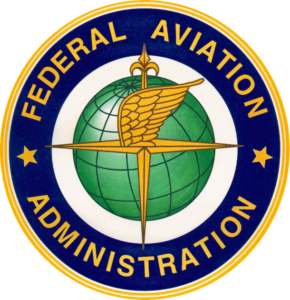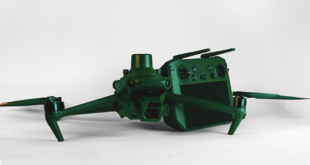In an InterDrone panel moderated by the excellent Christopher Korody, author of the Dronin’ On newsletter, a panel of lawyers, industry, and government representatives discussed the current state of commercial drone regulations in the U.S.
Referencing the recently released FAA Roadmap for commercial drone integration, Korody compared the current landscape to that in 2016, immediately after the release of Part 107 – telling the room that the situation is becoming rapidly more complex. Korody kicked off the discussion by asking panelists for their take on FAA Acting Administrator Dan Elwell’s Keynote Address.
The FAA Role
Bill Goodwin, General Counsel of AirMap began the conversation by saying that he was glad to hear the administration acknowledge that there are a lot of challenges that need to be addressed – and that their approach in dealing with drone pilots and companies is very human, rather than entirely authoritarian.
Bob Kirk, Parter with Wilkinson Barker Knauer, LLP, agreed with Goodwin – saying that Elwell is a champion for the industry. Kirk said that FAA is ready to go on laws for flight over people and flight at night, but has been prevented from acting by security concerns of other federal agencies.
Lydia Hilton, Attorney with Berman Fink Van Horn P.C. pointed out the quantitative difference between the approximately 50,000 manned aircraft flights daily in the U.S. – and the expected millions of daily drone flights. Hilton said that the primary change she sees affecting FAA policy is the need for a shift from the language of “accommodating” drones in the airspace to a concept of true integration.
Anthony Zakel, Deputy Assistant Inspector General for Aviation Audits at the US Department of Transportation, pointed out the mention of the FAA Reauthorization package – and said that there was a healthy discussion going on in Congress this week over the drone related amendments in the package. Zakel said that recreational drones were “the ones we worry about,” and emphasized that Congress is trying to insert itself into that conversation. Zakel also offered his guess that given the heavy activity in Washington DC this month, the September deadline may be missed, requiring another extension.
Kirk took on the task of clarifying progress on Remote ID and tracking. “The FAA has been sending some mixed signals,” said Kirk: telling industry sometimes to develop the Remote ID and Tracking technologies now and at others suggesting that development wait until after the rules are released. “The FAA is hamstrung…” he comments, regarding Section 336, from creating new requirements for recreational operators. However, Kirk disagrees that the law must be dismantled, saying that “there are some creative ways” to move forward.
Education vs. Enforcement
Section 336 is a hot topic and an important piece of the puzzle for the FAA future outlook. Hilton points out that the FAA doesn’t really want to get involved with enforcing drone laws and a local level, and suggests that there may need to be better delineation between drone laws and other commonly recognized laws or crimes committed with a drone.
Zakel said that collisions between drones and manned aircraft, as well as the FAA’s own model showing that a drone collision will in fact cause far more damage than a bird strike, has increased the level of concern in government agencies.
“We’ve reached a tipping point,” said Zakel. “Education must be bolstered with more effective enforcement and oversight… It’s an area that the FAA will need to improve on in the future.”
Innovation
Goodwin, from AirMap, shifted the conversation from safety needs to a major accomplishment for the industry and the FAA: the LAANC program. “It’s an extraordinary effort of innovation from the FAA,” said Goodwin. “It may seem simple… but the lessons learned are enormous.”
“It also points to ways that the FAA can innovate more,” said Goodwin, indicating that the technology and the program offers opportunities to expand. Applying the LAANC approach to other issues “might allow us to automate many different processes,” he said.
Privacy and Preemption
Lydia Hilton has been an observer on the Uniform Law Commission concerning the recently proposed Tort Law– and Korody asked her to weigh in on the discussion. The idea behind the Tort Law on Drones, explained Hilton, was to address the need to protect private property. “Basically, as the proposed template of the law is set up, if someone were to fly a drone over someone’s private property at an altitude of under 200 feet…” the property owner would have the right to exclude drones and potentially collect damages from the pilot. The committee has met for a year: and is currently receiving comments on the proposal. The commission is a year out from coming out with any common form, Hilton explained.
Kirk pointed out that the concept of FAA preemption was a significant issue that would be challenged by introducing a form that indicated that allowed state and local governments to legislate airspace under a certain
Throughout the course of the discussion panel – which touched on Integration Pilot Program projects, technology innovations, and the problems of public perception and privacy – the panelists did agree that the regulatory landscape for drones is complex and changing. As drone adoption expands, the need for clarity becomes even more critical.
Miriam McNabb is the Editor-in-Chief of DRONELIFE and CEO of JobForDrones, a professional drone services marketplace, and a fascinated observer of the emerging drone industry and the regulatory environment for drones. Miriam has a degree from the University of Chicago and over 20 years of experience in high tech sales and marketing for new technologies.
Email Miriam
TWITTER:@spaldingbarker
https://dronelife.com/2018/09/05/the-latest-outlook-on-faa-drone-regulations/
 Unmanned Aerial Vehicle The latest drone news
Unmanned Aerial Vehicle The latest drone news



